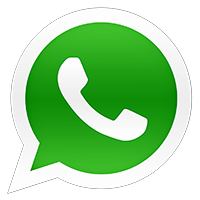Difference between Digital Printing and rotogravure printing for Stand Up Pouches
Flexible Packaging Printing Techniques
Digital Printing vs Rotogravure Printing
Digital printing and rotogravure printing are two distinct methods used for producing Flexible Customised Packaging, each with its own advantages and disadvantages. Here's a comparison of the two:
- Technology
Digital Printing |
Rotogravure Printing |
|
|
|
|
- Print Quality
Digital Printing |
Rotogravure Printing |
|
|
|
|
- Cost
Digital Printing |
Rotogravure Printing |
|
|
|
|
- Lead Time
Digital Printing |
Rotogravure Printing |
|
|
|
|
- Run Length Suitability
Digital Printing |
Rotogravure Printing |
|
|
|
|
- Customisation
Digital Printing |
Rotogravure Printing |
|
|
|
|
- Environmental Impact
Digital Printing |
Rotogravure Printing |
|
|
|
|
- Applications
Digital Printing |
Rotogravure Printing |
Use Cases: Ideal for food and non-food packaging with frequent design changes, limited editions, seasonal promotions, or when quick turnaround is needed. |
Use Cases: Best for mass production of packaging with consistent branding, such as food and beverage packaging, where high volumes and quality are paramount. |
Market Fit: Suitable for small to medium-sized companies or brands with diverse product lines. |
Market Fit: Ideal for medium to large scale companies with high-volume consistent demands. |
Summary:
Digital Printing |
Rotogravure Printing |
Digital Printing is best for shorter runs, quick turnarounds, and projects requiring high customization. It’s cost-effective for smaller quantities and flexible in design changes. |
Rotogravure Printing excels in long runs with consistent high-quality prints. It’s more cost-effective for large volumes but comes with higher setup costs and longer lead times. |
Choosing between the two depends on your specific needs—whether you prioritise flexibility and speed (digital) or consistency and cost-efficiency for large runs (rotogravure).
|
Digital Printing |
Rotogravure Printing |
Minimum order quantity |
1,000 |
10,000 |
Lead Time |
Shorter than rotogravure for quick turnaround, no set up required |
Greater than digital due to cylinder design set up |
Set up costs |
No |
Yes for cylinder(s)/print plate(s) |
Packaging size |
Maximum size limitations |
Large size options available |
Finishes |
Limited finishes available |
Various finishes available |
Unit cost |
High for small productions |
Low for large productions |
Ideal for |
Low quantities, multiple low quantity SKU’s, short runs, last minute orders or start-up businesses testing products. |
High volume, large scale productions, reproductions, large scale planned orders or established businesses with huge demand. |
If you’re still unsure which printing method is right for you, get in touch with us today to discuss your packaging plans.

